第48章 CHAPTER XIV BREAD-FRUIT(1)
ALL the inhabitants of the valley treated me with great kindness; but as to the household of Marheyo, with whom I was now permanently domiciled, nothing could surpass their efforts to minister to my comfort. To the gratification of my palate they paid the most unwearied attention. They continually invited me to partake of food, and when after eating heartily I declined the viands they continued to offer me, they seemed to think that my appetite stood in need of some piquant stimulant to excite its activity.
In pursuance of this idea, old Marheyo himself would hie him away to the sea-shore by the break of day, for the purpose of collecting various species of rare seaweed; some of which, among these people, are considered a great luxury. After a whole day spent in this employment, he would return about nightfall with several cocoa-nut shells filled with different descriptions of kelp. In preparing these for use, he manifested all the ostentation of a professed cook, although the chief mystery of the affair appeared to consist in pouring water in judicious quantities upon the slimy contents of his cocoa-nut shells.
The first time he submitted one of these saline salads to my critical attention, I naturally thought that anything collected at such pains must possess peculiar merits; but one mouthful was a complete dose; and great was the consternation of the old warrior at the rapidity with which I ejected his epicurean treat.
How true it is, that the rarity of any particular article enhances its value amazingly. In some part of the valley- I know not where, but probably in the neighbourhood of the sea- the girls were sometimes in the habit of procuring small quantities of salt, a thimble-full or so being the result of the united labours of a party of five or six employed for the greater part of the day. This precious commodity they brought to the house, enveloped in multitudinous folds of leaves; and as a special mark of the esteem in which they held me, would spread an immense leaf on the ground, and dropping one by one a few minute particles of the salt upon it, invite me to taste them.
From the extravagant value placed upon the article, I verily believe, that with a bushel of common Liverpool salt, all the real estate in Typee might have been purchased. With a small pinch of it in one hand, and a quarter section of a bread-fruit in the other, the greatest chief in the valley would have laughed at all the luxuries of a Parisian table.
The celebrity of the bread-fruit tree, and the conspicuous place it occupies in a Typee bill of fare, induces me to give at some length a general description of the tree, and the various modes in which the fruit is prepared.
The bread-fruit tree, in its glorious prime, is a grand and towering object, forming the same feature in a Marquesan landscape that the patriarchal elm does in New England scenery. The latter tree it not a little resembles in height, in the wide spread of its stalwart branches, and in its venerable and imposing aspect.
The leaves of the bread-fruit are of great size, and their edges are cut and scolloped as fantastically as those of a lady's lace collar. As they annually tend towards decay, they almost rival, in the brilliant variety of their gradually changing hues, the fleeting shades of the expiring dolphin. The autumnal tints of our American forests, glorious as they are, sink into nothing in comparison with this tree.
The leaf, in one particular stage, when nearly all the prismatic colours are blended on its surface, is often converted by the natives into a superb and striking head-dress. The principal fibre traversing its length being split open a convenient distance, and the elastic sides of the aperture pressed apart, the head is inserted between them, the leaf drooping on one side, with its forward half turned jauntily up on the brows, and the remaining part spreading laterally behind the ears.
The fruit somewhat resembles in magnitude and general appearance one of our citron melons of ordinary size; but, unlike the citron, it has no sectional lines drawn along the outside. Its surface is dotted all over with little conical prominences, looking not unlike the knobs on an antiquated church door. The rind is perhaps an eighth of an inch in thickness; and denuded of this, at the time when it is in the greatest perfection, the fruit presents a beautiful globe of white pulp, the whole of which may be eaten, with the exception of a slender core, which is easily removed.
The bread-fruit, however, is never used, and is indeed altogether unfit to be eaten, until submitted in one form or other to the action of fire.